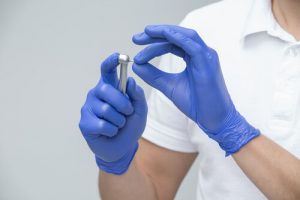For dentists and doctors of dental medicine, essentials involve knowing which is which in dentistry tools. Most people or even patients may be aware of dental handpieces, mirrors, and fillings. However, when it comes to dentistry and engineering, it may involve several equipments. Certified licensed dentists use dental burs for cleaning the grooves and surface of teeth. Even veterinarians see the benefits of using different types of dental burs for surgical engineering of the oral structures of animals. Many dental burs are in the form of sharp incision tools. Commonly, a dental bur may be identified as carbide, steel or diamonds. If you are a professional dentist who wants to further their education, this article about dental tools and equipment may be your advantage.
What Are Dental Burs?
Dentists have accessories for their dental handpiece to assist them in many surgical and cutting techniques. Most dentists may use these for cutting soft tissue during surgery. While other dental technologists may have to create better quality in constructing dentures or dental implants. Each bur may be different in shapes, sizes, and length. It is best to ask your supplier or inventory manager for dental equipment to know the credibility of these products. Moreover, a specialized dentist should also be sure always to remember their training when it comes to technical and surgical practices.
Three (3) Common Types Of Dental Burs
Any incoming professional must want to know which supplies they need in private, family, or dental offices. Rotary tools for sharpening, structural engineering, and polishing teeth come in the form of dental burs. Are there vast differences between diamonds, carbides, and stainless steel? Most suppliers and dental experts say there isn’t much, but when it comes to durability, you may have to read more to be sure which to buy in the future.
Stainless Steel
Initially, most dental items, such as machinery and equipment, are stainless steel. You may find these, obviously, from a dentist’s office that all items are almost stainless steel. Due to its durability and is easily sterilized, most dentists use stainless steel dental equipment for everyday techniques.
Diamond
Diamonds in instruments may seem like a luxury, but it is far from the shining material that makes it perfect for cutting. Dentists use diamond bur for extreme precision in cutting than of carbide.
Carbide
Carbides are known for their efficiency in having a smoother, more polished surface after cutting and surgery. This material is best for minor cuts, surgical polishing, and a better aesthetic appearance after a diamond cut.
Can Family Dentists Use Heavy Machinery And Equipment?
The rise of technology for many medical and dental practitioners are enabling the comeback of family doctors and dentists. This traditional practice is seeing a new twist when it comes to mobility and availability of emergency medical and dental surgeries on demand. Patients are looking for better options for structural repair such as those that need equipment such as a quality dental bur. Nowadays, the trend of family doctors and dentists allows a variety of mobile vans and clinic to have products, materials, supplies, and equipment on the move. Hence, upcoming professionals in the dental field need to know which manufacturer should they talk to for mobile equipment.
practice is seeing a new twist when it comes to mobility and availability of emergency medical and dental surgeries on demand. Patients are looking for better options for structural repair such as those that need equipment such as a quality dental bur. Nowadays, the trend of family doctors and dentists allows a variety of mobile vans and clinic to have products, materials, supplies, and equipment on the move. Hence, upcoming professionals in the dental field need to know which manufacturer should they talk to for mobile equipment.
What Are The Best Practices In Dentistry?
Not only do upcoming certified dentists must-know tools and equipment, but it is also a requirement to sanitize and disinfect them. A dental bur, just like handpiece, scissors, or grips, must have an autoclave sterilization procedure before the next patient. According to the American Dental Association (ADA), it is crucial always to keep a dental office clean. Signs of bacteria are invisible to the naked eye. Hence, the bacteria may cause the spreading of germs and infection, not just to the other dental staff but for the next patients.
